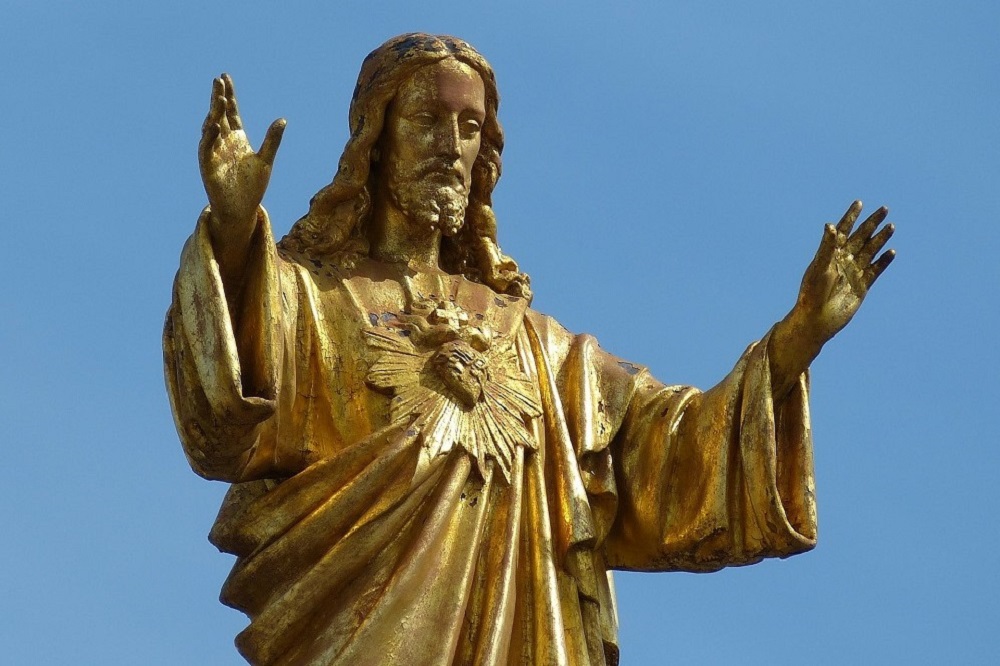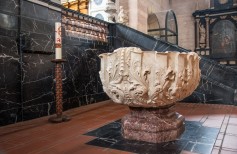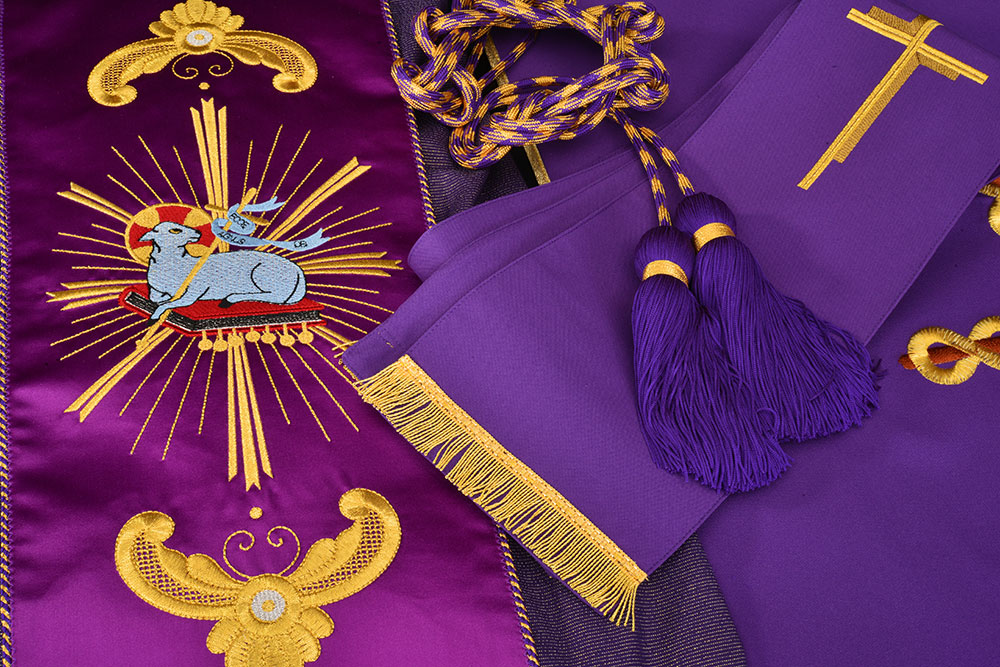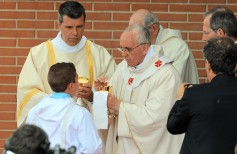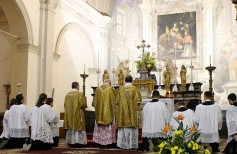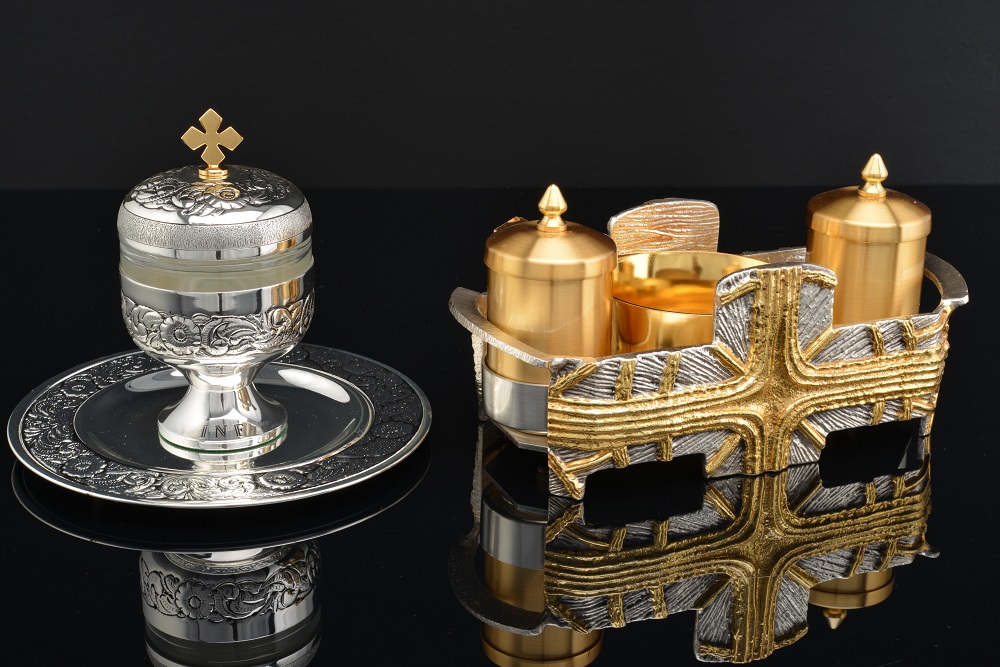Contents
Blessings we should know, some are famous, some others are curious. Instruments of faith and grace to let the Holy Spirit descend on those who are worthy.
Blessings have always been part of devotees’ lives with ancient formulas, rituals made of gestures that we often take for granted, but which express a thousand-year old heritage, full of meanings (and signifiers) that are deeply rooted in the history of religion itself.
If we look up the word “blessing”, we find the following definitions:
- Liturgical act or ceremony used to bless somebody or something: water b; act under which divine grace descends on devotees: ladle out a b. || urbi et orbi b. solemn papal blessing to the city of Rome and to the world
- Act that, in an eminent way, symbolizes a wishful and protective disposition: give children a b.; wish, good invocation: you will have the b. of all goods.
- Person or thing that is cause of good
Of course, we will focus on the first and most important meaning of the word. According to the Catholic Church, a blessing is a request made by someone, usually a religious minister such as a bishop, a presbyter or a deacon, to let God’s grace fall on someone else. It is an invocation of favor and benevolence for someone or something. The Church includes the blessing in the Sacramentals, that is, “sacred signs instituted by the Church. They prepare men to receive the fruit of the sacraments and sanctify different circumstances of life.”(Article 1677 of the Catechism of the Catholic Church). They are mostly oral formulas, even if they sometimes consider using particular gestures: for example, the sign of the cross with a hand movement, or the sprinkling of holy water. In some cases, also the Head of the family can invoke them on his beloved ones.
In the Old Testament blessings were meant mostly as a way to ask God to influence earthly and material life of those relying on Him; he was asked to grant the asker a wealthy and numerous family, a long life and prosperity. In some books, we find references to more spiritual blessings, such as wisdom, peace and justice. Jesus will reconnect to that vision of blessings in the New Testament. Within the Jewish culture, a blessing is always a divine prerogative, even when a man utters it. In this case, God sends his blessings (or curses) through a mediator. These men become blessings to other men, chosen by God to take his favor or his condemnation among their fellow men.
In the New Testament, Jesus becomes the personification of God’s blessing, His instrument of benevolence and redemption for all men. Jesus not only blesses his disciples, the sick, the children, but he is a blessing himself, an inexhaustible source of God’s Love and His endless generosity.
“God has blessed us in the heavenly realms with every spiritual blessing in Christ. (Ephesians 1,3)
Saint Paul speaks about the “full measure of the blessing of Christ” (Rm 15,29)
The Church welcomed all of the blessings in a liturgical book, the Book of Blessings. It contains all formulas for blessings that are useful in any occasion, and the blessings rituals that presbyters and deacons need to know. Let us look at some of the most important and popular blessings. We chose ten.
The Papal Blessing (apostolic blessing)
Apostolic Blessings are special blessings that only the Pope can ladle out, or a bishop or a minister of equal level. The Pope can also send a written apostolic Blessing, when necessary and only in specific occasions. In order to obtain a papal blessing, one needs to issue a request to the Office of Papal Charities, by sending a permission given by the Church authority. Papal blessings, given by the Pope or a Bishop, often include the plenary indulgence. Before the second Vatican Council, even a blessing ladled out by a priest in the event of an Extreme Unction was accepted as a papal blessing. The papal blessing is granted during some sacraments (Christening, First Communion, Confirmation, Wedding); when a priest is ordained or takes Holy Orders; when a lay man takes the Holy Orders (secular consecration); when a deacon is permanently ordained; for a meaningful wedding anniversary (silver wedding, golden anniversary, etc.); for some particularly important birthdays (18, 50, 100, etc.)
Urbi et Orbi blessing
The Urbi et Orbi blessing is probably the most famous among the papal blessings: the Pope ladles it out on some special occasions, during major holidays (Christmas and Easter) and on New Year’s Eve. It is also the first blessing published by the Pope after his election to the papal throne. It is a particularly powerful and important blessing, because it comes with a plenary indulgence for all those who are in the presence of the Pope, but also for those who are watching it on medias. The Latin expression Urbi et Orbi means “To the city (of Rome) and to the world”.
The Pope utters the blessing in Latin, and the devotees reply “Amen”.
“May the Holy Apostles Peter and Paul, in whose power and authority we trust, intercede for us before the Lord.
Amen.
Through the prayers and merits of Blessed Mary ever Virgin, Saint Michael the Archangel, Saint John the Baptist, the holy apostles Peter and Paul, and all the saints, may Almighty God have mercy on you and forgive all your sins, and may Jesus Christ bring you to everlasting life.
Amen.
May the almighty and merciful Lord grant you indulgence, absolution and the remission of all your sins, a season of true and fruitful penance, a well-disposed heart, amendment of life, the grace and comfort of the Holy Spirit and final perseverance in good works.
Amen.
And may the blessing of Almighty God, the Father, and the Son, and the Holy Spirit, come down on you and remain with you forever.
Amen.”
Eucharistic blessing
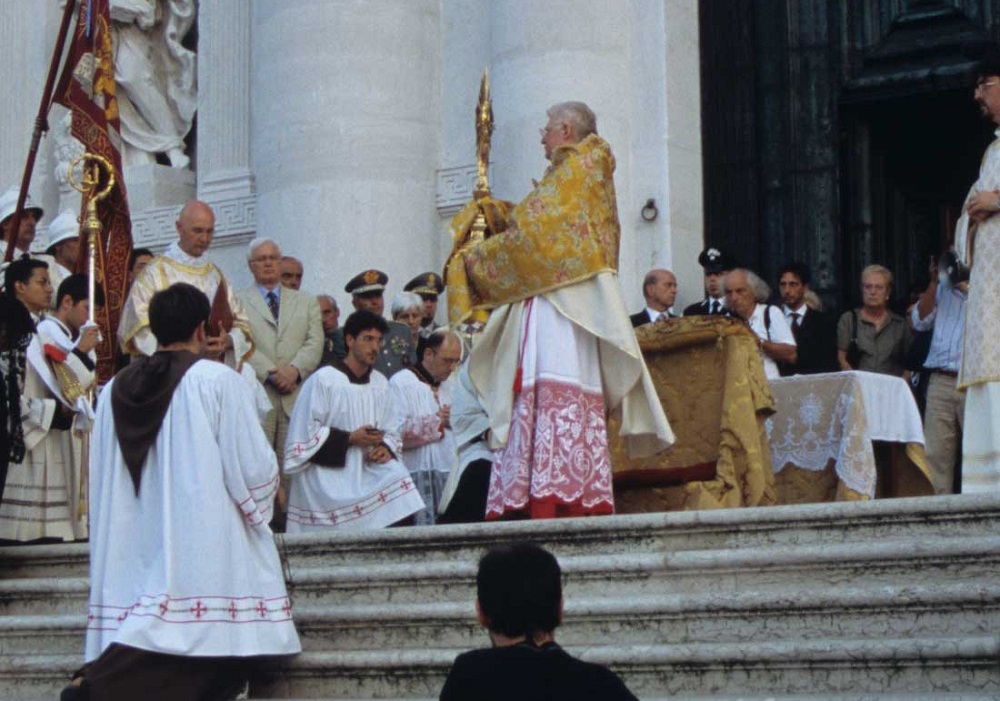
The Eucharistic blessing is the blessing practiced exposing Christ’s Body in the Ostensory on the altar, where everybody can see it and kneel down to pray. It is strictly connected to the practice of Eucharistic adoration then. Before the second Vatican Council, Eucharistic blessing was the most diffused and solemn liturgical practice, since it involved the consecrated bread at its center, that is, the most Holy Sacrament.
Bishops, presbyters and deacons can ladle out the Eucharistic blessing. It is divided into different stages:
- Exposition: the ostensory is taken out of the Tabernacle and placed on the altar. Devotees kneel singing an hymn, while the minister spreads incense on the Eucharist;
- Adoration: each devotee prays in silence;
- Invocations: Lauretan and ejaculatory litanies are recited;
- Oration: the minister recites his prayer in front of the most Holy Sacrament;
- Tantum ergo: devotees sing the last two verses of the Pange Lingua, while the minister spreads incense again;
- Benediction: the minister raises the ostensory and silently makes the sign of the cross to all devotees;
- Reposition: while the minister places the ostensory back on the altar, all recite the acclamation Blessed be God. While the prayer goes on, the most Holy Sacrament is put back into the tabernacle.
Padre Pio blessing
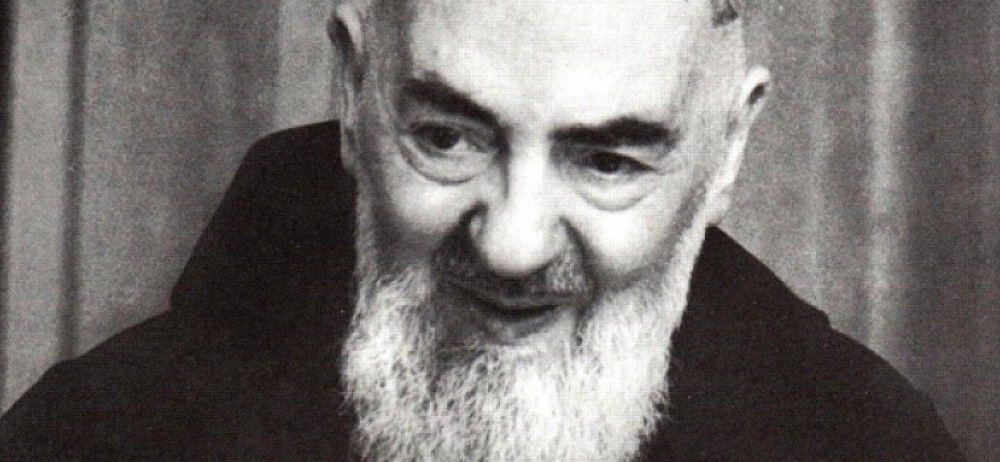
Among the ‘modern’ saints, Padre Pio is probably the one who most encouraged those turning to him for comfort and advice to rely on God in any moment of their life. According to the Saint from Pietrelcina, the only way worth of being traveled is the one where God is a constant presence next to us. Men only need to adapt their will to His, and let the Holy Spirit work through Him with blind faith and trust, with no clamor nor anxiety because Jesus knows what is better and can ensure that everything falls into place according to His Father’s will.
The blessings that Padre Pio used to ladle out to his followers were then focused on this invitation to lay down every anxiety and pain, and trust God and His infinite mercy, love Him above all and trustfully wait for the fruits of that love.
Here is an example of a goodnight blessing:
“May the blessing of God be a spare, support and guidance! Start a Christian family, if you wish for some serenity in this life. May the Lord give you children, and the grace to direct them on the way to heaven.
Do not strain for things that generate haste, perturbation and anxiety. Only one thing is necessary: raise your spirit and love God. With this thought, I wish you goodnight… in the name of the Father, the Son and the Holy Spirit. Praise Jesus and Mary. And goodnight to all“.
Saint Francis blessing
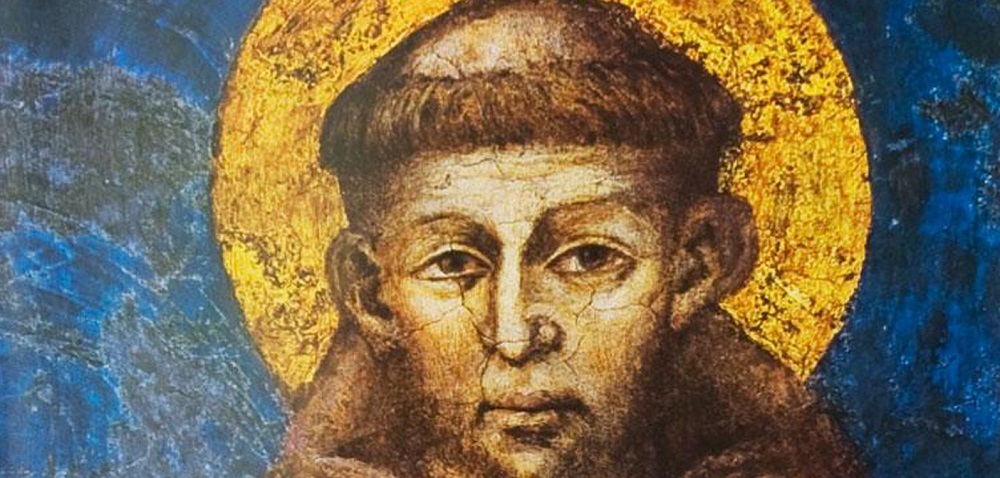
Among the many companions Saint Francis loved, Brother Leo has a particular role. It is not by chance that his remains are buried next to the poor from Assisi. He was a man of great culture and a skilled hand writer. He was also a secretary to Saint Francis, staying next to him in all the most meaningful moments of his life, joining him in the writing of the New Rule. He was also his father confessor. Francis used to call him God’s sheep due to his pureness, the spontaneity of his heart; he was the one that was allowed to see and touch the stigmata he received on Mount Verna. The love Francis felt for him was immense, and we can still have a glimpse of it today thanks to a precious relic that got through to us and is now stored in the cathedral of S. Francis in Assisi: the chartula. It is a piece of paper with the text of the Laudes to God on one side, and a blessing that Saint Francis dedicated to Brother Leo to support him in a difficult time on the other side:
Benedicat tibi Dominus et custodiat te,
ostendat faciem suam tibi et misereatur
tui convertat vultum suum ad te
et det tibi pacem.
Dominus benedicat frater Leo, te
Benedicat, benedicat,
benedicat tibi Dominus
et custodiat te Frater Leo, te
The Lord bless you
and keep you.
May He show His face to you
and have mercy.
May He turn His countenance to you
and give you peace.
The Lord bless you, Brother Leo
bless you
bless you
the Lord bless you,
and keep you, Brother Leo.
This ancient blessing is shaped by the love between the two friends; it got through to us acquiring a universal value. The blessing of Saint Francis has become a gift from the Saint to all men, of any time and country; a wish to enjoy the love of God, His benevolent and merciful look, which is valid today and forever, for anyone in despair or in need or encouragement.
The nuptial blessing

The nuptial blessing is that moment during a wedding ceremony when the Priest blesses the two spouses. It usually happens after the ring exchange or after the Eucharist liturgy, but the spouses can arrange a different moment with the priest. At the same way, they can choose the formulas for the blessings for spouses, which differ slightly one from the other. As a general line, the Catholic wedding that takes place during a Eucharistic Celebration is divided into the following moments:
- Introductory rites
- Memory of Baptism
- Readings from the Bible
- Homily
- The reception of consent
- The giving of rings
- (Nuptial blessing)
- The Universal prayer
- Invocation for the saints
- Eucharistic liturgy
- (Nuptial blessing)
- Closing rites
The habit of having a priest or a bishop giving the nuptial blessing is quite ancient. Some documents prove that it was already popular in the IV century, but not mandatory. In fact, at that time wedding was mainly a private agreement between the spouses and their families, to which a minister could possibly participate to bless the couple. From the XI century, the presence of a priest celebrating the wedding became mandatory, and the Council of Verona (1184) officially included the wedding in the list of sacraments, and as such, it had to be regulated by ecclesiastic laws. From 1215, with the Lateran Council IV, the Church defines the liturgy for weddings in all of its religious and juridical aspects. The following councils will confirm and expand this regulation.
This is what the Liturgy dictates:
- After the Our Father, the prayer Deliver us is omitted. The Priest, standing and facing the bride and groom, invokes upon them God’s blessing, and this is never omitted. In the invitation, if one or both of the spouses will not be receiving Communion, the words in parentheses are omitted. In the prayer, the words in parentheses may be omitted if it seems that circumstances suggest it, for example, if the bride and bridegroom are advanced in years.
The bride and bridegroom approach the altar or, if appropriate, they remain at their place and kneel. If the blessing is anticipated after the ring exchange, the celebration continues with Our Father and the Deliver Us, according to the Roman Missal.
We said that the spouses can choose among different formulas for the nuptial blessing. Let’s see one:
(The Priest, with hands joined, calls upon those present to pray with these or similar words)
Let us pray to the Lord for this bride and groom, who come to the altar as they begin their married life, that partaking of the Body and Blood of Christ they may always be bound together by love for one another.
(And all pray in silence for a while. Then the Priest, with hands extended over the bride and bridegroom, continues to say:
Holy Father, who formed man in your own image,
male and female you created them,
so that as husband and wife,
united in body and heart,
they might fulfill their calling in the world;
O God, who, to reveal the great design you formed in your love,
willed that the love of spouses for each other
should foreshadow the covenant you graciously made
with your people, so that,
by fulfillment of the sacramental sign,
the mystical marriage of Christ with his Church
might become manifest in the union of husband and wife among your faithful;
Graciously stretch out your right hand over these your servants (Name and Name),
and pour into their hearts the power of the Holy Spirit.
Grant, O Lord, that, as they enter upon this sacramental union,
they may share with one another the gifts of your love
and, by being for each other a sign of your presence,
become one heart and one mind.
May they also sustain, O Lord,
by their deeds the home they are forming.
(and prepare their children to become members of your heavenly household
by raising them in the way of the Gospel).
Graciously crown with your blessings your daughter (Name),
so that, by being a good wife (and mother),
she may bring warmth to her home with a love that is pure
and adorn it with welcoming graciousness.
Bestow a heavenly blessing also, O Lord, on (Name), your servant,
that he may be a worthy, good
and faithful husband (and a provident father).
Grant, holy Father, that,
desiring to approach your table as a couple joined in Marriage in your presence,
they may one day have the joy
of taking part in your great banquet in heaven.
Through Christ our Lord.
Amen.
Blessing of animals

The habit of blessing animals dates back to the medieval age and is of farming origins. Once people used to bless cows, calves, sheeps, pigs and courtyard animals. Back then, the wellbeing of animals was strictly connected to people’s wealth, since the majority of entire families’ sustenance depended on milk, eggs and meat they could obtain from animals. Today things are a bit different, and animals such as dogs, cats and other small pets are taken to receive the blessing. They are not necessary animals as they were once, but they make people’s lives more pleasant with their company and affection, and remind people of how important it is to show respect and take care of such small creatures.
This is what the Book of Blessings says about it:
According to the providence of the Creator, many animals have a certain role to play in human existence by helping with work or providing food and clothing. Thus when the occasion arises, for example, the feast of some saint, the custom of invoking God’s blessing on animals may be continued.
The present order may be used by a priest or deacon. It may also be used by a layperson, who follows the rites and prayers designated for a lay minister.
(Nuovo Benedizionale, chapter XXXIV, title: Blessing of animals, nn. 1058-1059/1074.)
We must not consider the blessing of animals as a gratitude towards God for creating them as support, comfort and sustenance for people. By blessing them, we thank God for the whole creation, for the immense gift He gave us, raising us above all and giving us a wonderful world so that we could enjoy it as we like.
The ritual of the blessing of animals is celebrated during the feast of St. Anthony the Abbot, considered as protector of pets, on January 17th.
The blessing goes:
O God, you have done all things wisely;
in your goodness you have made us in your image
and given us care over other living things.
reach out with your right hand
and grant that these animals may serve our needs
and that your bounty
in the resources of this life
may move us to seek more confidently the goal of eternal life.
Through Christ our Lord.
Amen.
The blessing of Homes
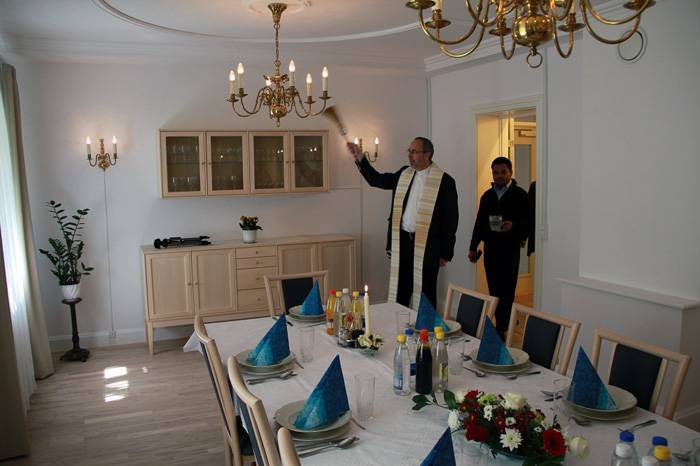
Even the blessings of homes, as of the families living in them, are quite popular in our country. The parish or his collaborators, who go from home to home usually during solemn events such as Easter, give these blessings. In doing that, ministers follow the example of Jesus’ apostles who, at His instigation, went to people’s homes to take the gift of peace (Mt 10,13). On this occasion, the families living in those homes and the homes themselves are sprinkled with holy water.
The New Book of Blessings recites:
Pastors must regard as one of their primary pastoral duties the faithful visitation of families to bring the message of Christ’s peace. They will thus obey the command of Christ to his disciples: “On entering any house, first say: ‘Peace to this house’” (Luke 10:5).
Pastors and their assistants must therefore consider as a sacred trust the custom of an annual visit, particularly during the Easter season, to the families living in their parish. The occasion is a rich opportunity to fulfill pastoral responsibilities that grow in effectiveness the more the priests come to know the families.”
(Nuovo Benedizionale, chapter XIII title Annual Blessing of Families in their Own Homes, nn. 434-435.)
The visit includes the reading of the Word of God and the blessing prayer, with particular care to the presence of children or older people. The formula of that blessing has many variations, here is one:
Blessed are you, God our Father,
for your gift of this house as the dwelling place of this family.
Grant that those who live here
may obtain the gifts of the Holy Spirit.
through their works of charity
let them show what grace your blessing brings,
so that all who visit this home
will find the spirit of love and peace
which only you can give.
Through Christ our Lord.
Amen.
The Irish blessing
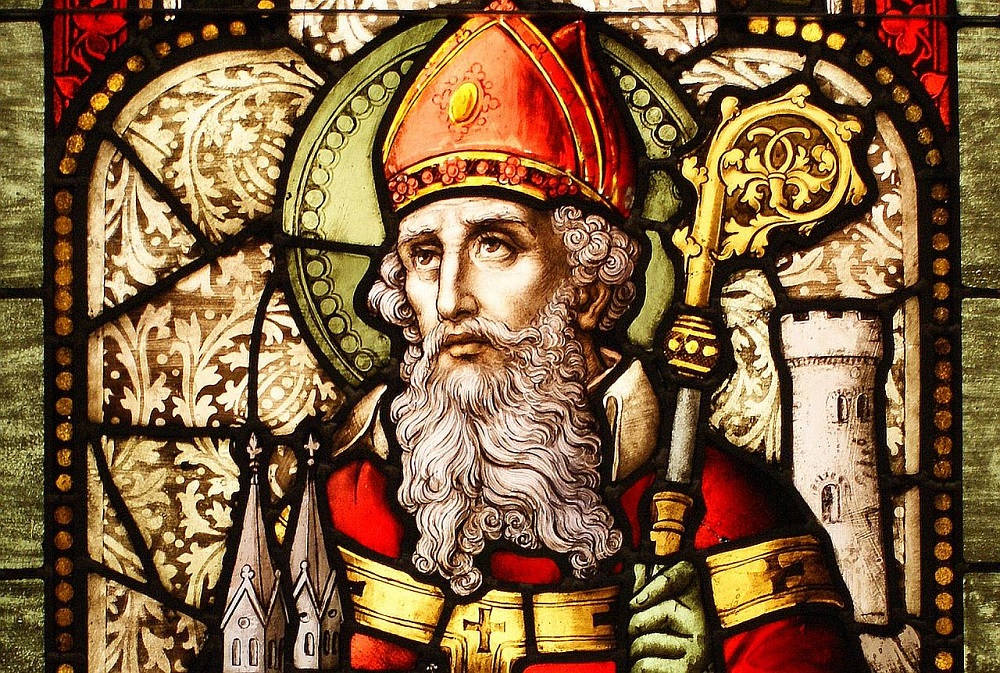
Saint Patrick, patron of Ireland, left this blessing to us, better known as the Blessing of the Irish traveler. He was born in a noble Roman family, was kidnapped as a teenager by Irish pirates and lived as a slave of an Irish King in Northern Ireland. Later, when he received the call, he spent his life evangelizing Irish people, who were living in multiple tribes at the time. He spent most of his life on the move, traveling and meeting different people and cultures. His blessing expresses this inclination to travel. It is addressed to those who are never tired of discovering new places and meeting new people.
May the road rise up to meet you,
may the wind be always at your back.
may the sun shine warm upon your face;
the rains fall soft upon your fields
and until we meet again,
may God hold you in the palm of His hand.
The Easter blessing

The Easter blessing celebrates Jesus’ resurrection, and makes those who receive His strength part of His victory over death. With this blessing, recited by the head of the family on Easter, which indeed celebrates Jesus’ triumph and the accomplishment of his mission of love and salvation, devotees are blessed as God’s children, and therefore indirectly also God Himself, in a circle of redeeming faith and reciprocal Love.
To give the Easter blessing, ministers use holy water, recalling Baptism and the rebirth of every Christian, and the blessed olive, symbol of peace and reconciliation. We must not consider the Easter blessing as some sort of home lucky charm though! This ritual must not leave any room for superstition: evil stays away from homes not thanks to this blessing, but because those receiving it and living in them are able to live in harmony, serenity and in dialog with God. No magic then, but the cohesion of a sanctified family, blessed in front of God’s eyes. The whole family should be present during the Easter blessing. It is also possible to set up a small altar with a picture of Jesus next to the pictures of the family members. Before lunch on Easter day, the family reunites around the table and the head of the family introduces the prayer:
HEAD OF FAMILY: In the name of the Father, the Son and the Holy Spirit.
EVERYONE: Amen.
HEAD OF FAMILY: From the Gospel of Luke (Lc 24, 30-31)
When he was at the table with them,
He took bread, gave thanks,
broke it and began to give it to them.
Then their eyes were opened and they recognized him,
Short silent pause.
EVERYONE: Our Father…
HEAD OF THE FAMILY: We praise you, God Father,
Lord of heaven and earth,
so that in the resurrection of Jesus from the dead
you give us hope of new and eternal life.
Bless our family gathered around the table,
strengthen the bonds that unite us
and let us diffuse the joy of the Risen Lord
to those we meet.
He lives and reigns for ever and ever.
EVERYONE: Amen. Hallelujah.

